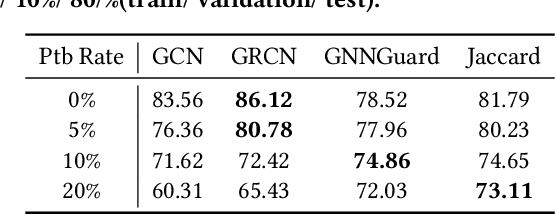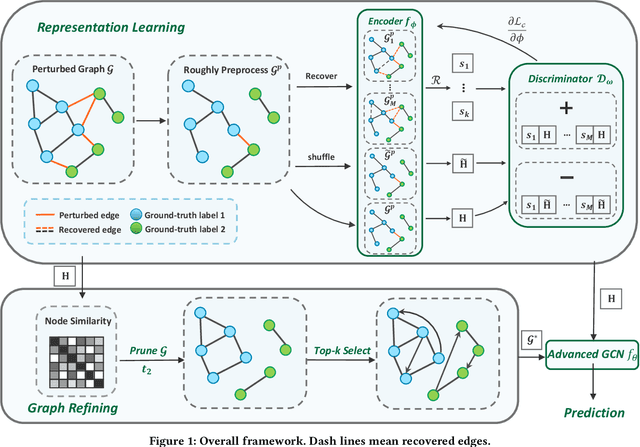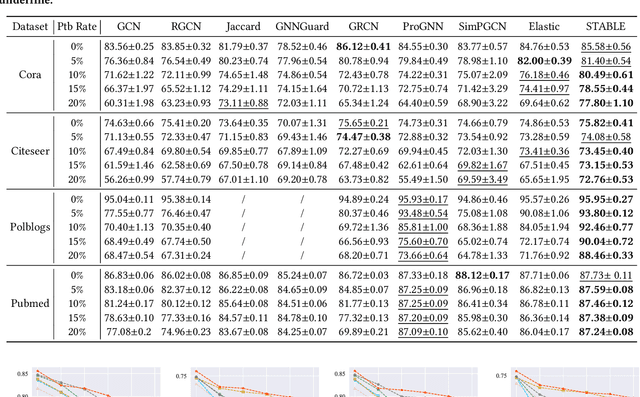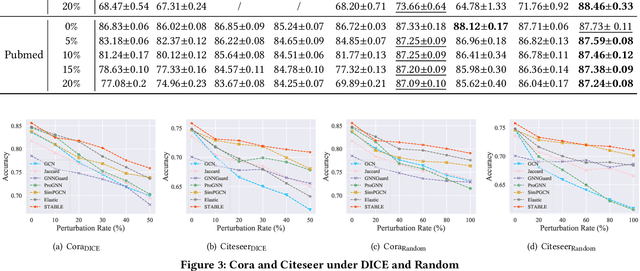Reliable Representations Make A Stronger Defender: Unsupervised Structure Refinement for Robust GNN
Paper and Code
Jun 30, 2022



Benefiting from the message passing mechanism, Graph Neural Networks (GNNs) have been successful on flourish tasks over graph data. However, recent studies have shown that attackers can catastrophically degrade the performance of GNNs by maliciously modifying the graph structure. A straightforward solution to remedy this issue is to model the edge weights by learning a metric function between pairwise representations of two end nodes, which attempts to assign low weights to adversarial edges. The existing methods use either raw features or representations learned by supervised GNNs to model the edge weights. However, both strategies are faced with some immediate problems: raw features cannot represent various properties of nodes (e.g., structure information), and representations learned by supervised GNN may suffer from the poor performance of the classifier on the poisoned graph. We need representations that carry both feature information and as mush correct structure information as possible and are insensitive to structural perturbations. To this end, we propose an unsupervised pipeline, named STABLE, to optimize the graph structure. Finally, we input the well-refined graph into a downstream classifier. For this part, we design an advanced GCN that significantly enhances the robustness of vanilla GCN without increasing the time complexity. Extensive experiments on four real-world graph benchmarks demonstrate that STABLE outperforms the state-of-the-art methods and successfully defends against various attacks.
 Add to Chrome
Add to Chrome Add to Firefox
Add to Firefox Add to Edge
Add to Edge